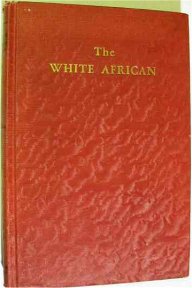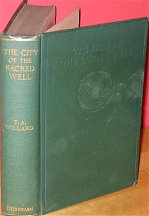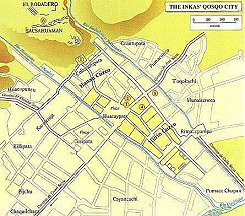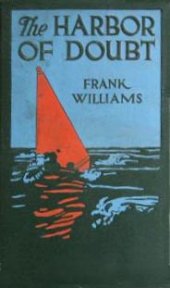False Dawn
New Years Day 1924
The House of Mirth ~ Synopsis: Published in 1905, Edith Wharton's
first novel, THE HOUSE OF MIRTH, navigates the murky waters of class-bound
courtship and marriage in turn-of-the-century upper-crust Manhattan. Ironic,
sharp, and tragic, the novel follows beautiful, orphaned Lily Bart in her
search for a rich husband--the only route open to her if she is to survive
in a ruthlessly materialistic world. Mercilessly, Wharton exposes the cruelty
and indifference of a society in which such a woman has no role except
to be exploited and looked down upon. Nor does she neglect to expose the
vanity and delusions of poor Lily herself--qualities that undermine her
considerable intelligence and charm. As always, Wharton is writing about
a world she knows first-hand, and one in which she suffered her own trials.
The complex and poignant tale of Lily Bart is one of her most popular and
successful novels
Online
eText Edition: http://onlinebooks.library.upenn.edu/webbin/gutbook/lookup?num=284
The Old Maid
The Spark
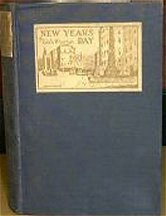 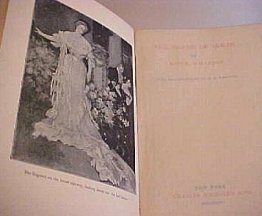 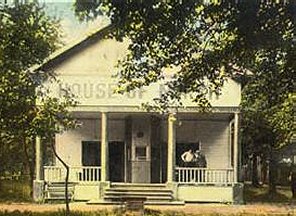
Other:
Gutenberg
Online Editions
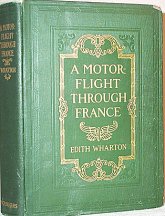 Published
by Charles Scribner's Sons, October 1908 First Edition. Having 201
pages, illustrated with numerous photographs taken during a splendid motor
car journey through France. The romance of travel is captured here
by Wharton as she travels around in Gaelic history, from Rouen to Nimes
to Soissons. As a wealthy New Yorker, in a day when most people could not
afford such journeys (pre-WWI) Ms. Wharton set out by automobile with her
husband, and friend Henry James to tour the French countryside. While perhaps
more common place today, visualize a time when the countryside was once
traveled primarily by train, and to reach those out of the way places normally
accessible only by wagon or oxcart made for some rather exciting adventures.
Containing visits the home of Madam Dudevant (George Sand) as well as a
numerous churches and other classic buildings of historic interest. A trip
to a lost era, with so much of the French countryside now altered, many
of the older places entirely wiped away from the landscape. Published
by Charles Scribner's Sons, October 1908 First Edition. Having 201
pages, illustrated with numerous photographs taken during a splendid motor
car journey through France. The romance of travel is captured here
by Wharton as she travels around in Gaelic history, from Rouen to Nimes
to Soissons. As a wealthy New Yorker, in a day when most people could not
afford such journeys (pre-WWI) Ms. Wharton set out by automobile with her
husband, and friend Henry James to tour the French countryside. While perhaps
more common place today, visualize a time when the countryside was once
traveled primarily by train, and to reach those out of the way places normally
accessible only by wagon or oxcart made for some rather exciting adventures.
Containing visits the home of Madam Dudevant (George Sand) as well as a
numerous churches and other classic buildings of historic interest. A trip
to a lost era, with so much of the French countryside now altered, many
of the older places entirely wiped away from the landscape. |
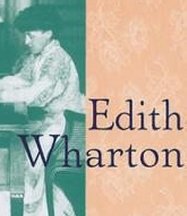 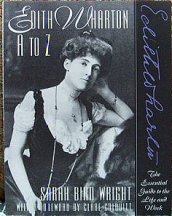 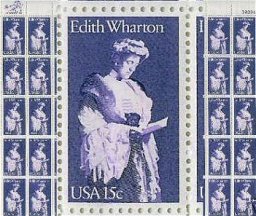
Text from the USPS Commemorative
Panel for the 1980 Edith Wharton Commemorative Stamp Issue
She was, by her own admission,
of a different America than she would have chosen. And yet, while Edith
Wharton continually lamented her misfortune at entering the world in 1862,
the beneficiaries of her literature -- both there and now -- are all the
richer for it. A unique story-teller, incisive social critic and historian,
she wrote passionately, pessimistically and painfully of what she believed
to be the social disintegration of her beloved New York. Her literary works
are intimate portraits of a society which reared her in the old tradition
and mores of a different age and then later abandoned them itself.
With novels such as House of Mirth (1905), The Fruit of the Tree
(1907) and The Custom of the Country (1913) she trumpeted her rebellion
against such hypocrisy and against those who had stolen the virtue of "the
old America" she longed for. She had lived, she felt, to see disappear
"the formulative value of nearly 300 years of social observance; concerted
living up to long-established standards of honor and conduct of education
and manners." But as much as Mrs. Wharton abhorred the intrusion
of the "predatory new rich" into her world she was, by accident of birth,
born to a family that embraced money, postion and the trappings of wealth.
Of her early years she wrote, "When I was young it used to seem to me that
the group in which I grew up was like an empty vessel into which no new
wine would ever again be poured." Writing became her only outlet and her
instrument for revenge. A student of Henry James, she won critical acclaim
on both Continents for her satirical expenses on the pretentiousness and
vacuity of New York's changing aristocracy.
Testifying to the remarkable
scope of Edith Wharton's creative talents, the novel which won her acclaim
as the "Jane Austin of America" dealt with the trials and tribulations
of the suffering poor in a Massachusetts milltown. Namely Ethane Frome.
In 1920, Edith Wharton reached
the peak of her career, winning a Pulitzer Prize for her novel, The Age
of Innocence. Honoring Mrs. Wharton is the second stamp in the Literary
Series, issued on September 5, 1980. The stamp was designed by Bradbury
Thompson of Riverside, Connecticut, who based it on a photograph of Mrs.
Wharton taken at Christmas, 1905. The steel line engraving of the State
Seal of New York was provided by the National Bank note Company. The allegorical
figure was used by the American Bank note Securities Corporation in 1923
and also by the Banco International de Costa Rica that same year. The farm
scene engraving is from the Franklin Engraving and Printing Company.
http://www.edithwharton.org/ew.html |
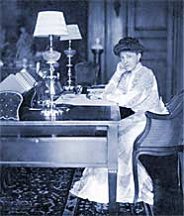 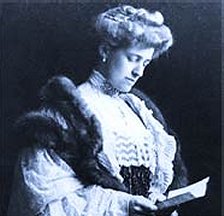 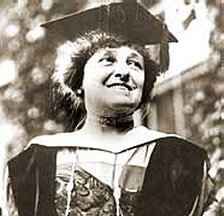 Edith Wharton: Over the
past twenty years, the resurgence of interest in Edith Whartons career
has restored to print most of her fiction, travel books, and writings on
architecture and gardens. Yet her numerous exercises in literary criticism
have remained almost entirely overlooked. Whartons scattered reviews, essays,
forewords, and introductions have never before been collected in a single
volume. This authoritative edition (including some newly discovered texts)
makes an exceptional contribution not only to the ongoing "Wharton revival"
but also to the study of American literature, of literary criticism, and
of women as writers of criticism. "In this fascinating collection of Whartons
critical prose, Wegener demonstrates that Wharton was a far better critic
than she realized, and one only regrets, after reading these works, that
she was not more prolific in that arena. Wegeners introduction to this
collection benefits from being scholarly, readable and cogent." --Publishers
Weekly "An impressive collection of individual gems as well as confirming
evidence of an impressive critical intelligence. Mr. Wegener has done us
all a great service." --James W. Tuttleton, coeditor of Edith Wharton:
The Contemporary Reviews "Frederick Wegener's introduction is, in itself,
a substantial contribution to Wharton scholarship: it serves as a well-focused
lens for viewing the essays he has edited so meticulously." --Julie Olin-Ammentorp,
Edith Wharton Review
Edith Wharton: Over the
past twenty years, the resurgence of interest in Edith Whartons career
has restored to print most of her fiction, travel books, and writings on
architecture and gardens. Yet her numerous exercises in literary criticism
have remained almost entirely overlooked. Whartons scattered reviews, essays,
forewords, and introductions have never before been collected in a single
volume. This authoritative edition (including some newly discovered texts)
makes an exceptional contribution not only to the ongoing "Wharton revival"
but also to the study of American literature, of literary criticism, and
of women as writers of criticism. "In this fascinating collection of Whartons
critical prose, Wegener demonstrates that Wharton was a far better critic
than she realized, and one only regrets, after reading these works, that
she was not more prolific in that arena. Wegeners introduction to this
collection benefits from being scholarly, readable and cogent." --Publishers
Weekly "An impressive collection of individual gems as well as confirming
evidence of an impressive critical intelligence. Mr. Wegener has done us
all a great service." --James W. Tuttleton, coeditor of Edith Wharton:
The Contemporary Reviews "Frederick Wegener's introduction is, in itself,
a substantial contribution to Wharton scholarship: it serves as a well-focused
lens for viewing the essays he has edited so meticulously." --Julie Olin-Ammentorp,
Edith Wharton Review
The widespread resurgence
of interest in Edith Wharton's career over the past twenty years has restored
to print most of her fiction, travel books, and writings on architecture,
gardening and interior decoration. Yet one significant and substantial
portion of her accomplishment has remained largely overlooked: Wharton's
numerous exercises in literary criticism. Constituting an unusually little-known
body of work by an otherwise preeminent American writer, Wharton's many
scattered reviews and essays, literary eulogies, and forewords and introductions
(to her own works, and to works of others) have never before been collected
in a single volume. Covering works of various literary traditions, including
eloquent general considerations of fiction and criticism, and embracing
novels, volumes of lyric and dramatic verse, and works by other critics
of literature, art, and architecture, these critical writings demonstrate
the extraordinary range of Wharton's critical interests and intelligence.
A searching and comprehensive introductory essay places her critical prose
in the context of Wharton's career as a whole, and draws on a wealth of
unpublished materials in exploring the uncertainties and inhibitions against
which she had to struggle in order to express herself as a critic at all.
Assembling her miscellaneous critical writings (including some newly discovered
texts), this authoritative edition makes an exceptional contribution not
only to the ongoing "Wharton revival" but also to the study of American
literature, of literary criticism, and of women as writer's of criticism.
Industry reviews
"By the side of the absolute
mastery of plot, character and style displayed in her latest novel, 'The
House of Mirth' seems almost crude. Edith Wharton is a writer who brings
glory on the name America, and this is her best book. It is one of the
best novels of the twentieth century and looks like a permanent addition
to literature." New York Times - L. Phelps (10/20/1920)
"For Edith Wharton...there
was no genuine and honorable and emotionally fulfilling alternative to
the social order...To defy the social ethic was to disturb the foundation
of society...But only an imagination that could feel the enormous temptation
to do so--had felt it deeply, perhaps, in her own passional life--...could
write as compelling an account of both the lure and the danger as 'The
Age of Innocence'." R. W. B. Lewis
"There are only three or
four American novelists who can be thought of as 'major'--and Edith Wharton
is one." Gore Vidal
"Wegener provides not only
an invaluable compilation of Wharton's uncollected critical writings but
also a sound and thoroughly informed overview of Wharton's critical achievement."Publisher's
catalogue - R. W. B. Lewis
"Her essays are of interest
chiefly because they enact the intellectual and cultural adventures of
a woman of letters, disciplined perceiver of architecture, gardens and
interior decoration, and reader of solid books in science and philosophy
as well as belles-lettres....[T]hey disclose a novelist who...clung to...'final
values' and traditional ways....[T]he critical essay wasn't the happiest
medium for her playful severities." New Republic - Daniel Aaron (01/20/1997)
"THE AGE OF INNOCENCE, beneath
its fine surface, holds an abyss--the abyss of time, and the tragedy of
human transience."
Updike
"Some of these pieces admirably
display Wharton's high cultural standards, incisive critical eye, and conservative
literary tastes, but many are works only the most devoted Whartonian would
need to read." Asimow
|




 Published
by Charles Scribner's Sons, October 1908 First Edition. Having 201
pages, illustrated with numerous photographs taken during a splendid motor
car journey through France. The romance of travel is captured here
by Wharton as she travels around in Gaelic history, from Rouen to Nimes
to Soissons. As a wealthy New Yorker, in a day when most people could not
afford such journeys (pre-WWI) Ms. Wharton set out by automobile with her
husband, and friend Henry James to tour the French countryside. While perhaps
more common place today, visualize a time when the countryside was once
traveled primarily by train, and to reach those out of the way places normally
accessible only by wagon or oxcart made for some rather exciting adventures.
Containing visits the home of Madam Dudevant (George Sand) as well as a
numerous churches and other classic buildings of historic interest. A trip
to a lost era, with so much of the French countryside now altered, many
of the older places entirely wiped away from the landscape.
Published
by Charles Scribner's Sons, October 1908 First Edition. Having 201
pages, illustrated with numerous photographs taken during a splendid motor
car journey through France. The romance of travel is captured here
by Wharton as she travels around in Gaelic history, from Rouen to Nimes
to Soissons. As a wealthy New Yorker, in a day when most people could not
afford such journeys (pre-WWI) Ms. Wharton set out by automobile with her
husband, and friend Henry James to tour the French countryside. While perhaps
more common place today, visualize a time when the countryside was once
traveled primarily by train, and to reach those out of the way places normally
accessible only by wagon or oxcart made for some rather exciting adventures.
Containing visits the home of Madam Dudevant (George Sand) as well as a
numerous churches and other classic buildings of historic interest. A trip
to a lost era, with so much of the French countryside now altered, many
of the older places entirely wiped away from the landscape.





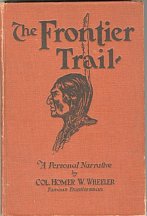
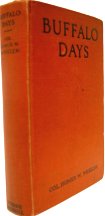
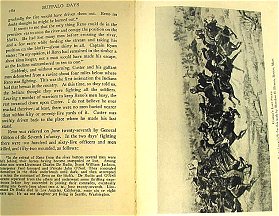
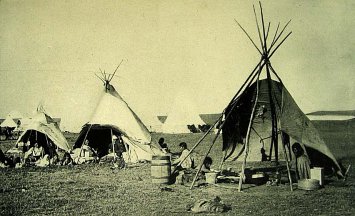
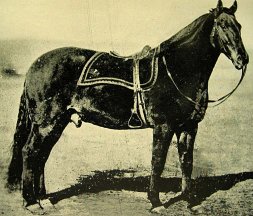
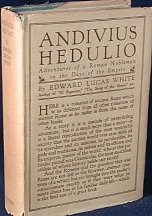
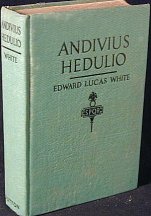
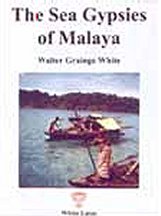 This
book is considered a classic amongst the sparse Moken ethnographic literature.
The author was a man with an inquiring mind, full of curiosity, who wished
to go beyond the limits of his missionary tasks and relate the story of
his personal life. The book's most important merit was to reveal the life
of the Moken at the beginning of the century. it sums up the author's fieldwork
observations dating from 1911. He writes about the administrative and political
structure of Tenasserim (he was responsible for the population census of
the Moken), which was the first part of Burma to be surrendered to the
British after the Anglo-Burmese war of 1824-1826. His book enables us,
on the one hand, to become aware of the nature, fauna and flora of this
region, and on the other, the human intrigues involving the English, Indians,
Karen, Mons, Malays, Burmese and, of course, the Moken. We become vividly
aware, though his writings, of contemporary western arrogance and the developing
phenomenon of colonial administration and the ways in which it exploited
indigenous wealth. The missionaries, administration, cartographers, geo-graphers
and the military were able, long before the ethnologists, to engage in
all kinds of work which attracts the interest of present investigators:
reports, mapping, census, dictionaries. These are precious instruments
for observers of small, non-literate societies.
This
book is considered a classic amongst the sparse Moken ethnographic literature.
The author was a man with an inquiring mind, full of curiosity, who wished
to go beyond the limits of his missionary tasks and relate the story of
his personal life. The book's most important merit was to reveal the life
of the Moken at the beginning of the century. it sums up the author's fieldwork
observations dating from 1911. He writes about the administrative and political
structure of Tenasserim (he was responsible for the population census of
the Moken), which was the first part of Burma to be surrendered to the
British after the Anglo-Burmese war of 1824-1826. His book enables us,
on the one hand, to become aware of the nature, fauna and flora of this
region, and on the other, the human intrigues involving the English, Indians,
Karen, Mons, Malays, Burmese and, of course, the Moken. We become vividly
aware, though his writings, of contemporary western arrogance and the developing
phenomenon of colonial administration and the ways in which it exploited
indigenous wealth. The missionaries, administration, cartographers, geo-graphers
and the military were able, long before the ethnologists, to engage in
all kinds of work which attracts the interest of present investigators:
reports, mapping, census, dictionaries. These are precious instruments
for observers of small, non-literate societies.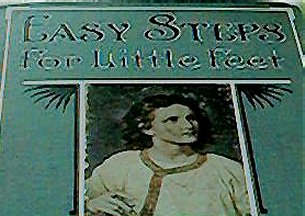
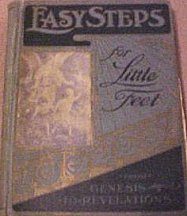
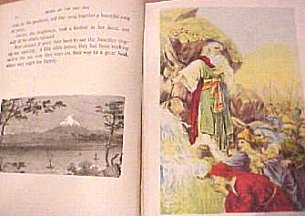
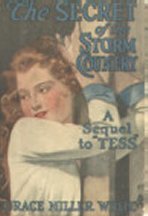
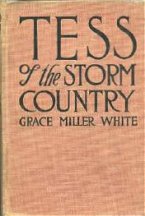
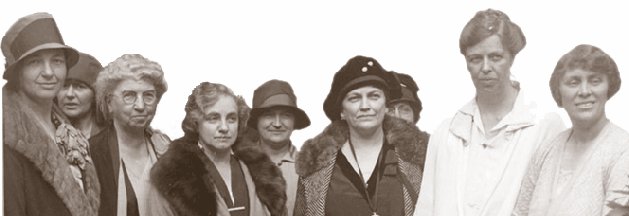
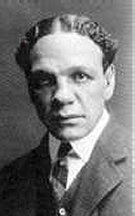 Related:
Lewis,
"Bill" (William H.) b. Nov. 30, 1868, Berkeley, VA ~ d. Jan. 1, 1949: The
first black ever named to an All-American team, Lewis was the son of former
slaves who moved to New England when he was young. He had an unusual college
football career: He graduated from Amherst College, where he was a starter
center for three years and team captain in his senior season, 1891, and
then played for Harvard in 1892 and 1893 while attending law school.
Casper
Whitney selected him as an All-American after both of his seasons at Harvard.
Sportswriter Casper Whitney began picking an annual all-American team in
1889. Casper Whitney left Harper's Weekly to beome editor of Outing
Magazine in 1900. Whitney gave a summary of the college baseball season
almost every season until 1916. He usually named eastern and midwestern
champions separately. An exception was 1902 when he published a top twenty
for the entire country.
Related:
Lewis,
"Bill" (William H.) b. Nov. 30, 1868, Berkeley, VA ~ d. Jan. 1, 1949: The
first black ever named to an All-American team, Lewis was the son of former
slaves who moved to New England when he was young. He had an unusual college
football career: He graduated from Amherst College, where he was a starter
center for three years and team captain in his senior season, 1891, and
then played for Harvard in 1892 and 1893 while attending law school.
Casper
Whitney selected him as an All-American after both of his seasons at Harvard.
Sportswriter Casper Whitney began picking an annual all-American team in
1889. Casper Whitney left Harper's Weekly to beome editor of Outing
Magazine in 1900. Whitney gave a summary of the college baseball season
almost every season until 1916. He usually named eastern and midwestern
champions separately. An exception was 1902 when he published a top twenty
for the entire country. 